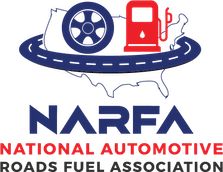A startling 45% of retirement plan sponsors are unaware of their fiduciary responsibilities within their organization’s retirement scheme. As fiduciaries, it’s imperative to adhere to the established best practices, ensuring plans are managed in accordance with all pertinent rules, regulations, and governing documents. Formulating a 2024 compliance checklist can facilitate this process effectively.
Proactive Self-Audits: A Shield Against Liabilities
Recognizing your fiduciary role is the first step; the next critical phase is adherence to prevailing laws and guidelines. With the U.S. Department of Labor (DOL) and the Internal Revenue Service (IRS) amplifying their retirement plan compliance audits, it’s more important than ever to ensure your plan’s documentation and operations are flawless. Undertaking a self-audit or operational compliance review can significantly mitigate future risks, penalties, and liabilities.
Frequent noncompliance areas identified by DOL and IRS include:
- Discrepancies in plan documents and operational execution, particularly around compensation definitions
- Eligibility criteria mishandlings
- Issues with loans and in-service distributions
- Errors in vesting schedules and required minimum distributions
- Failures in nondiscrimination and coverage tests
- Unaccounted for participants and delayed contributions
Top 10 Compliance Strategies for Optimal Retirement Plan Management
Unsure if you’re meeting best practices or seeking to improve? Implement these ten pivotal strategies to bolster your retirement plan’s compliance and effectiveness:
- Regularly select and review plan investments.
- Ensure continuous monitoring and reporting of investment and participant activities.
- Regularly evaluate and compare plan costs.
- Clearly understand and execute your fiduciary duties.
- Keep abreast of legislative changes and updates, including nuances from the SECURE 2.0 Act of 2022.
- Enhance fiduciary security and risk mitigation.
- Prepare for audits with independent compliance reviews.
- Recognize the influence of retirement plan design on competitiveness.
- Manage day-to-day administration, adhering to all reporting and recordkeeping norms.
- Promote financial well-being and retirement preparedness among employees through effective program development.
Incorporating these guidelines into your retirement plan strategy for 2024 can help ensure your program not only complies with regulatory standards but also supports your employees’ journey to a secure retirement. NARFA’s Multiple Employer Pension Plan handles all compliance and fiduciary requirements for members, and the savings from this program is more than the cost of NARFA membership.
Recent Posts
7 Health Insurance Renewal Questions Every Business Owner Must Ask
Every year, business owners walk into their health insurance renewal meetings expecting a fair review, and walk out facing another unexplained increase. This year, change [...]
Massachusetts Pay Transparency Law (2025): Compliance Guide for Employers
What Is the Massachusetts Pay Transparency Law?Beginning October 29, 2025, Massachusetts employers with 25 or more employees must disclose pay ranges in job postings and [...]
AICC Leads the Way: How Integrated Mental Health Support Creates Safer Workplaces
The Game-Changing Benefit Most Workers' Comp Programs Miss While traditional self-insured workers' compensation programs focus solely on handling claims after injuries occur, the AICC leads [...]




